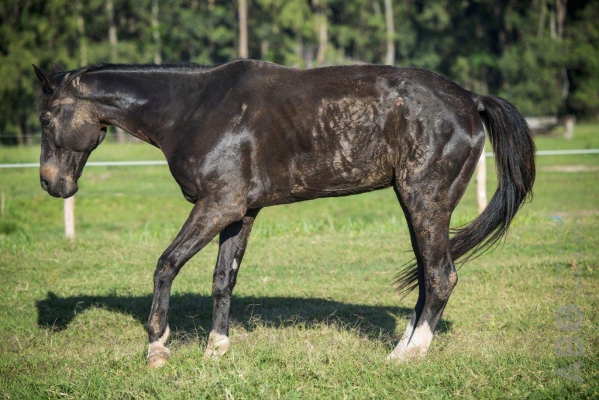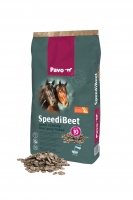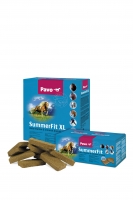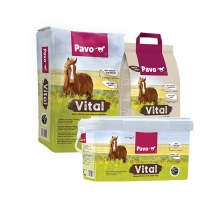Laminitis: the causes and treatment
Laminitis is for a horse a very painful condition, of which an inflammation in the hoof due to a severe metabolic disorder causes problems. How do you recognize a horse with laminitis? What are the causes of this disease and more important, how can you treat it?
What is laminitis?
Laminitis is an inflammation in the hoof whereby the hoof laminae, who take care that the hoof wall and the coffin bone are strongly connected, start igniting. This causes that the connection in between can disconnect and the coffin bone comes loose from the hoof wall, whereby this sags or rotates. The inflammations are accompanied by fever and swelling. This causes the horse a lot of pain. Laminitis shows mostly (first) up at the front hooves. A horse that has laminitis ones, always remains sensitive to this condition.
How can you recognize laminitis?
A horse with laminitis will try to relieve the affected hooves by placing the hind legs far below the body and put the affected leg (or legs) forward. You will see that your horse will move as less as possible, because it is painful. Sometimes they will lie for a long time to relieve the legs. Depends on the severity of laminitis the coffin bone can comes loose from the hoof dermis, whereby the coffin bone no longer has support and tilts. The tip of the coffin bone then enter the bar wall. In serious cases you can even see that the coffin bone comes through the bar wall.
The causes of laminitis
Laminitis can have various causes. We have listed the five most common ones:
-
Intestinal disorders
A common cause for intestinal disorders is when a horse gets a too large amount of high-energetic diet. For example by sugar rich (spring) grass or from a large amount of concentrated feed that is given in one go, for example eating a feed barrel. The intestinal flora is thus disturbed that toxins are formed. If these get into the blood, laminitis can occur.
-
Overweighted
Horses and ponies that are too fat have a greater chance of hitting laminitis. If your horse has a tendency to get fat quickly, it important that he or she keeps moving. It does not need to be always under the saddle or driving, but it can also be hand walking or lunging.
-
Uterine inflammation
When the afterbirth does not come off within 6 hours after the birth of the foal, uterine inflammation can arise. When those toxins gets into the blood, the mare can become laminitis. So always keep an eye on the mare after the birth of the foal.
-
Bar bruises
Poor care of the hooves can lead to bar bruises and inflammation. Regular maintenance of the hooves and trimming and / or shoeing by a recognized farrier every 6-8 weeks is therefore advisable.
Also prolonged trotting on a paved road and/or long trailer transport can cause acute laminitis.
-
Medicines
By administering certain medicines toxic substances can enter the bloodstream, which also can cause laminitis. If your horse or pony is sensitive for laminitis, it is smart to read the package leaflet or consult with the vet before you administering the medicines.
-
Diseases
Horses and ponies with Cushing’s disease / PPID are extra sensitive for laminitis.
My horse has laminitis. What now?
When your horse has laminitis, you can do the following things:
- Consult your veterinarian immediately
- Do not give concentrated feed or acces to the pasture, but feed exclusively skimpy and stalky hay. You can chose for vitamins and minerals supplements instead of concentrated feed like Pavo Vital and Pavo Summerfit.
- Put your horse on wet sand or in the mud to continuously cool the hoof and to distribute/alleviate the pressure.
- To decrease the pain and pressure, it is advisable to consult with the farrier to remove the horseshoes or to get custom horseshoes.
Prevent laminitis
You can as much as possible prevent that your horse or pony gets laminitis with these tips:
- Ensure a gradual transition from stable to pasture. Start with a hour per day and increase that day by day.
- Put your horse in the pasture in the morning, when the fructan is low. Keep eventual an eye on the fructan index. Be aware that after night frost it is most safe to keep your horse inside.
- Prevent grazing on bare meadows: short grass contains relatively much sugar.
- Give your horse in the morning first roughage in the stable or make a wet mix of Pavo Speedibeet. This gives your horse a feeling that his stomach is full, whereby he will not eat that much grass in the first hours on the pasture.
- Adjust the amount of concentrated feed when your horse will go outside.
- Place a partition in the pasture which you can move up 1 meter every two days.
- Keep an eye on timely loosing the afterbirth (within 6 hours).

High-fibre, quick soaking beet pulp flakes
The daily vitamin and mineral supplement
Daily vitamin and mineral balancer





